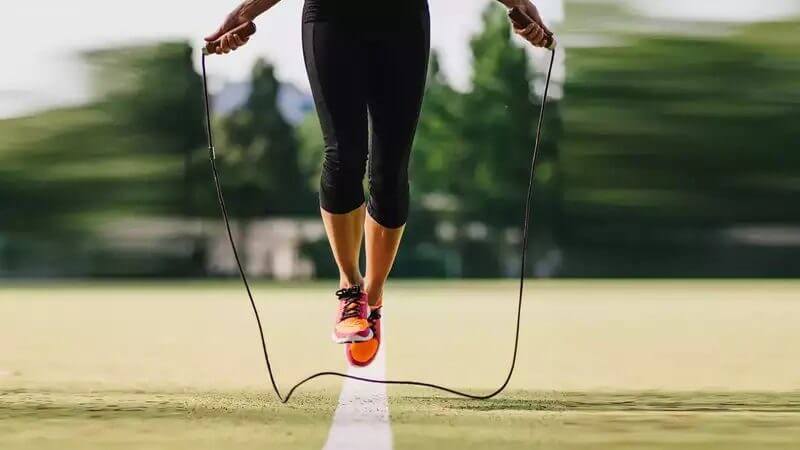It’s no secret that tennis is a physically demanding sport. When you consider that a tennis match can last anywhere from half an hour to more than five hours, it becomes readily apparent that a tennis player will need to possess extraordinary stamina, physical agility, and strength in order to be prepared for the rigors of the game. A well-designed strength training program can not only condition your body to withstand the demands of intense play, but it can also help you develop the mental fortitude necessary to “dig deep” when endurance is required.
When designing a tennis strength training program, it’s tempting to focus on the more obvious areas of physical development such as shoulder or forearm strength, but it is also important to remember that so much of what makes a great tennis player has to do with their overall coordination and agility. All of us have seen pros like Simona Halep manage to scramble around the court at what seems to be superhuman speed, making near-impossible shots look simple. What often goes overlooked is his extraordinary responsiveness and acceleration to the ball, which depends upon a comprehensive regimen of tennis-specific training exercises.
Below is a list of essential exercises that must be included in any serious tennis strength-training program. Incorporating these exercises into your training regimen will help to increase your overall athleticism and prevent injuries.
Warm-Up Exercises
- Jumping Rope: Don’t let the simplicity of the exercise fool you–jumping rope is one of the most effective exercises for improving cardiovascular fitness as well as physical coordination. Start off skipping at a leisurely pace, and then as you get used to it, increase your speed to roughly double your original pace.
- “Butt Kicks”: This memorably-named exercise does wonders for loosening the legs up before matches, as well as increasing flexibility and range of motion. On the tennis court, jog back and forth several times between the baseline and the net, making sure that you kick your legs high enough behind you for your heel to touch your buttock with each step.
- Baseline Shuffles: Quickly shuffling your feet in a lateral motion from side to side will help you improve your footwork skills and remind you that inertia is a forbidden practice in tennis. Make sure that your legs do not cross over one another as you shuffle from one side of the court to the other.
Upper Body Exercises
- Medicine Ball Toss: A significant amount of a tennis player’s strength and power comes from having a strong, stable core. The medicine ball toss is one of the most useful exercises to employ in order to strengthen your core and improve your balance. You will need a partner for this exercise; stand on opposite sides of the net and toss a medicine ball back and forth while shuffling across the court in a lateral motion. Go back and forth about three times before resting, then resume.
- Lateral Raises: You can use either dumbbells or resistance bands for this exercise. Stand with feet roughly shoulder width apart, looking straight ahead with your back straight and your knees slightly bent. You should start with your hands by your side, palms facing inward toward your hips. Raise your arms sideways (like a bird flapping its wings) until they are almost fully extended outward, and in one smooth motion lower them back down to your sides. Repeat for about 10-12 reps. This exercise strengthens your shoulders and trapezius muscles for upper-body stability and power.
- Upright Row: You can use resistance bands, dumbbells, or a barbell for this exercise. Stand with feet about shoulder-width apart, holding the bar down by the tops of your thighs, with your palms facing down. Pull the bar straight up to your upper chest so that your elbows extend out sideways and the tops of your wrists are close to your chin. Lower the bar back to your thighs in one smooth motion. Perform about 3 sets of 10-12 reps. This exercise will strengthen your shoulders, upper back, and forearms, all of which are instrumental in executing powerful strokes.
Lower Body Exercises
- Walking Lunges: Using a dumbbell in each hand, walk across the room using large, extended strides. With each step, dip your leading leg down so that the top of your thigh is parallel to the floor, while the trailing leg is bent at the knee. Make sure to keep your back straight, and try not to extend your knee beyond the point of your toes. This will do wonders for building your hamstring and quadricep strength, both of which are crucial to executing explosive moves on the tennis court.
- Box Jump: Standing in front of an exercise box or step platform with both feet planted side by side, bending at the knees and jumping up, landing with both feet flat on the box/platform. Step back down and repeat. This exercise improves coordination and explosiveness.
- Lateral Alley Drills: This exercise should be done on the tennis court. With your racket in your hand, start off facing the net just outside of the doubles sideline. Quickly shuffle or side step to where both feet are now on the other side of the singles sideline, and then shuffle back over to where both feet are on the other side of the doubles sideline again. Go back and forth in this manner for roughly 15 to 30 seconds. This drill will significantly improve your footwork, agility, and movement.
Remember to stretch before and after your workouts–this is one of the most important things you can do to stay flexible and prevent injuries. Adding these essential tennis strength-training exercises to your regimen will greatly enhance your athleticism, power, and coordination, and will help elevate your tennis game to the next level.
